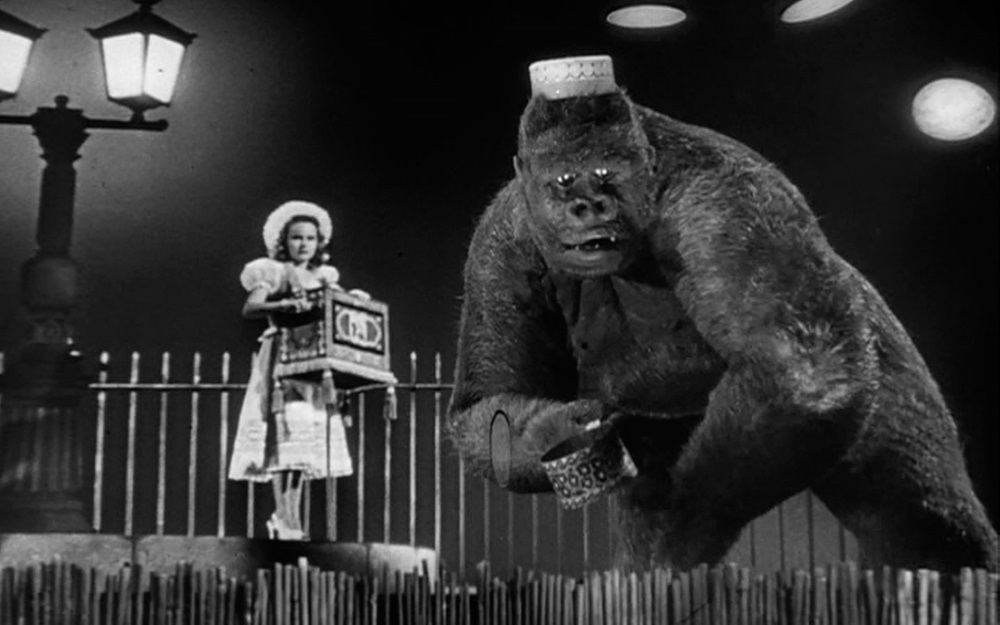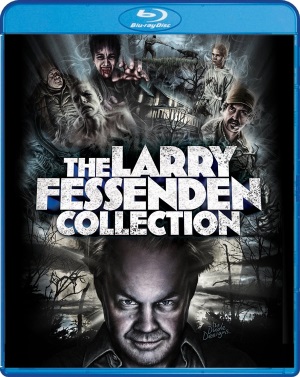 Larry Fessenden isn’t the most well-known of indie-horror filmmakers but he should be. As a writer / director, he’s taken the classic horror genres and turned them inside out, and he’s produced or co-produced dozens of films, including Kelly Reichert’s Wendy and Lucy and Night Moves, Ti West’s The House of the Devil and The Innkeepers, and Jim Mickle’s Stake Land, through Glass Eye Pix, his own production shingle. He’s been a cheerleader, in his own words, for other independent filmmakers with a passion for horror, and his encouragement has made the genre much richer in the past couple of decades.
Larry Fessenden isn’t the most well-known of indie-horror filmmakers but he should be. As a writer / director, he’s taken the classic horror genres and turned them inside out, and he’s produced or co-produced dozens of films, including Kelly Reichert’s Wendy and Lucy and Night Moves, Ti West’s The House of the Devil and The Innkeepers, and Jim Mickle’s Stake Land, through Glass Eye Pix, his own production shingle. He’s been a cheerleader, in his own words, for other independent filmmakers with a passion for horror, and his encouragement has made the genre much richer in the past couple of decades.
Scream Factory, the horror imprint of the Shout! Factory label, collects Fessenden’s first four directorial features and releases them on Blu-ray for the first time in The Larry Fessenden Collection (Scream Factory, Blu-ray). All four films are all newly mastered in HD transfers approved by the director and presented in separate discs with new and archival supplements.
No Telling (1991), Fessenden’s first feature as a director, takes on Frankenstein through the story of a research scientist who starts poaching animals from the nearby forest to experiment on while ostensibly on a summer vacation with his wife. Meanwhile a proponent of organic farming tries to get the local farmers to give up pesticides for the good of the land. It’s eco-horror in the modern age. The disc includes new commentary by Fessenden, a featurette, the short film White Trash (1997), and deleted scenes.
Fessenden’s breakthrough film was Habit (1997), in which he also starred as an alcoholic confronted with evidence that his new, insatiable lover is a bloodsucker: Is she a vampire or is he delusional? While the question remains in the air the film is compelling (if overlong), a neat little study in urban alienation. Shaggy and shabby with his broken tooth smile, Fessenden is oddly a charming lead as a pathetic drunk who is no rush to change his life, making him the perfect victim. He again provides a new commentary track and the disc includes a making of featurette, the original short film version of Habit (1982), his short film N is for Nexus from The ABCs of Death 2, and two music videos.
“Just because people don’t believe in them, doesn’t mean they aren’t there” says an Indian mystic in Wendigo (2002), Fessenden’s thoughtful attempt to pull myth and legend into the real world through the eyes of a young boy. A little murky and overly obsessed with righteous vengeance, it’s also moving and mysterious, with solid performances by Jake Weber (as the dad) and Erik Per Sullivan (Malcolm in the Middle) as the wide-eyed boy whose belief just may bring the beast to life. This one has two new commentary tracks—one by Fessenden, the other by actors Patricia Clarkson, Jake Weber, and John Speredakos—plus the half-hour featurette “Searching For the Wendigo,” an archival interview with Fessenden, and the short film Santa Claws (2008).
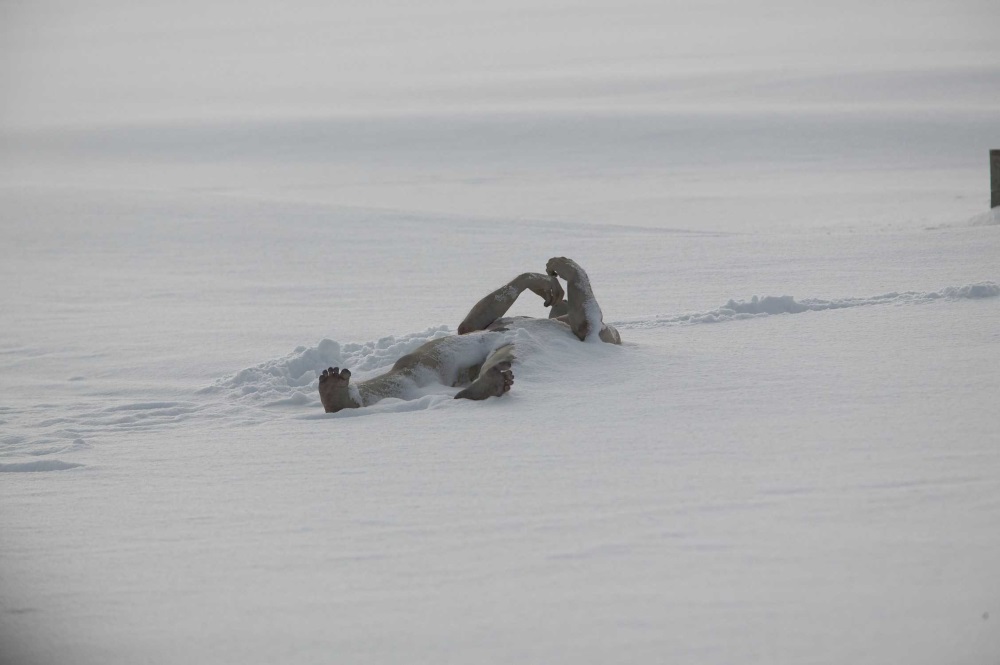
‘The Last Winter’
The Last Winter (2007), an eco-twist on the ghost story set in the isolation of an Arctic oil company outpost, is Fessenden’s most accomplished and evocative film to date. The atmosphere evokes John Carpenter’s The Thing, a team surrounded by a frozen desert where storms whip up out of nowhere and something seemingly alien is out there trying to get to them. “The corpses of animals and plants from millions of years ago,” is how environmental scientist James LeGros describes oil. He may also have pegged the source of the angry spirits of the Earth rising to stop the destruction.
Ron Perlman is excellent as the company man who is both invested in the culture of oil and dedicated to protecting all the people on his team as they come under assault or simply drift into madness. It’s Fessenden’s biggest and most visually evocative production and the marriage of environmentalist and animist themes that makes for a resonant – and still timely – horror film. Connie Britton, Zach Gilford and Kevin Corrigan co-star.
The commentary by Fessenden and the feature-length “The Making of The Last Winter,” a rather impressionistic survey of the production, are carried over from the earlier DVD release. This release also includes archival footage, an interview with journalist Adam Nayman, and promo films that Fessenden made for Stake Land, which he produced.
Fessenden contributes new introductions to many of the supplements on all four discs, there are “sizzle reels” from Glass Eye, and the set is accompanied by a booklet with liner notes, stills, storyboards, and sketches.
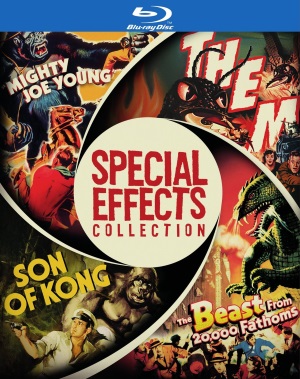 Special Effects Collection (Warner, Blu-ray), a generic title for a pretty impressive set, presents the Blu-ray debuts of four vintage giant monster movies: Son of Kong, Mighty Joe Young, The Beast from 20,000 Fathoms, and Them!
Special Effects Collection (Warner, Blu-ray), a generic title for a pretty impressive set, presents the Blu-ray debuts of four vintage giant monster movies: Son of Kong, Mighty Joe Young, The Beast from 20,000 Fathoms, and Them!
Son of Kong (1933), the sequel to the original King Kong, was rushed into production to cash in on Kong-mania. Made by the same team (director Ernest B. Schoedsack, producer Merian C. Cooper, stop motion effects by Willis O’Brien) but on a much smaller scale, it takes showman Robert Armstrong back to Kong Island in search of treasure, where he finds Kong’s offspring, a sweet-tempered white ape. It has none of the sweep and grandeur of the original, but as a miniature it has undeniable charms, due largely to the work of O’Brien. He makes Junior a delightful, playful character and creates even more inventive prehistoric creatures for the heroes to battle. Helen Mack takes damsel in distress duties this time around. It’s a fine restoration by Warner of a film that was not well preserved by RKO and there are no supplements apart from a trailer.
Willis O’Brien won finally won his much deserved Oscar for Mighty Joe Young (1949), creating yet another ape, this one the humongous playmate of a young woman Terry Moore who was raised in Africa. Robert Armstrong is once again a showman entrepreneur who brings the ape to civilization (as a nightclub attraction this time) with disastrous consequences, but this time he pitches in with his right-hand man (Ben Johnson) to rescue the ape from his concrete prison and get him back to the jungle. Joe is a marvelous creation and the climax, where he risks his own safety to rescue children trapped in an orphanage fire, is a magnificent set piece that is as touching as it is thrilling. Ernest B. Schoedsack directs and Cooper produces with partner John Ford.
This disc, like all in the set, carries over the extras from the earlier DVD release. This has commentary by stop motion animator Ray Harryhausen, special effects veteran Kan Ralston, and actress Terry Moore, the featurettes “Ray Harryhausen and Mighty Joe Young” and “A Conversation with Ray Harryhausen and the Chiodo Brothers” (contemporary special effects artists inspired by Harryhausen who kept the art of physical effects alive in their films), and the trailer
The Beast from 20,000 Fathoms (1953) is not only one of the essentials of the giant monster on the rampage genre of the nuclear 1950s, it’s perhaps the only one of the decade that isn’t actually an atomic mutation. This one is a slumbering prehistoric giant (a Rhedosauras to be specific) awakened from its icy suspended animation by nuclear tests. Apparently cranky about its wake-up call, it stumbles through New York and lays waste to Coney Island before meeting its inevitable end. The first solo creature feature work by the legendary Ray Harryhausen (he was an assistant on Mighty Joe Young) highlights this clunky but endearing piece of B-movie pulp, directed by Eugene Lourie (formerly the production designer for Jean Renoir – what a transition!). The script was “inspired” by Ray Bradbury’s short story “The Foghorn” and familiar genre stalwarts Kenneth Tobey and Lee Van Cleef co-star. The film was an inspiration for Japan’s Godzilla.
It includes the two featurettes originally produced for the DVD release, “The Rhedosaurus and the Rollercoaster: Making the Beast” with Ray Harryhausen and “Harryhausen and Bradbury: An Unfathomable Friendship,” which presents Ray Harryhausen and Ray Bradbury in conversation from 2003, when they were interviewed for the film’s 50th Anniversary. Also includes Harryhausen on “Armatures” and the trailer.
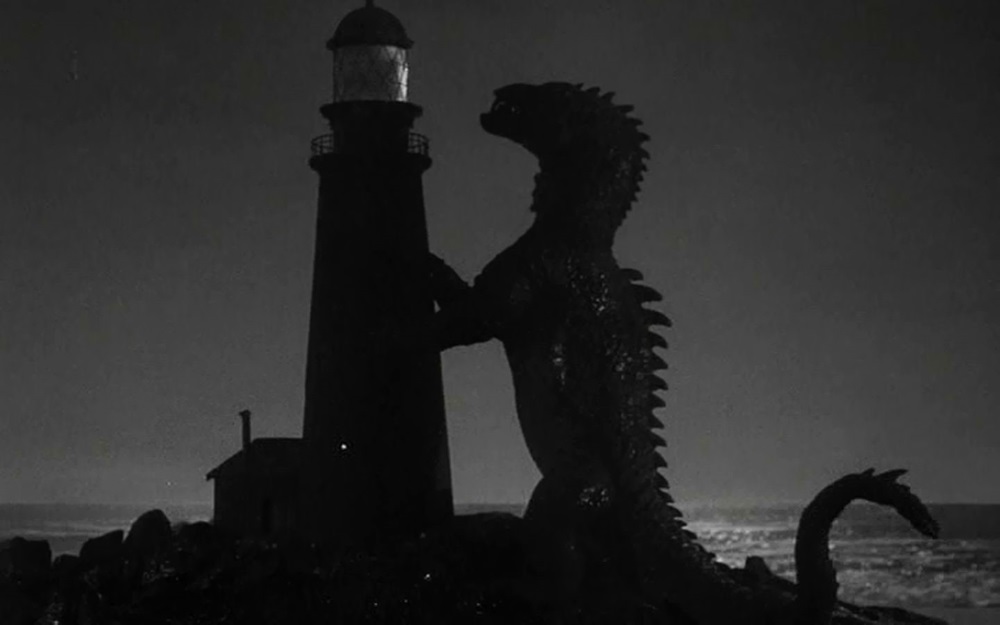
‘The Beast from 20,000 Fathoms’
Them! (1954) is arguably the most famous giant insect movie of the classic era and certainly the most serious of the 1950s atomic creature features. Ants the size of tanks swarm the desert and it takes an alliance of cops (James Whitmore), scientists (Edmund Gwenn and Joan Weldon), the armed forces (Onslow Stevens), and the FBI (James Arness) to beat back the hungry hordes. This inspired dozens of similar giant insect and atomic mutation films, but most of the imitators were cheap knock-offs. This one is intelligently scripted, with adult characters and at least a modicum of research into ant sociology, a budget to match its ambition, and a director (Gordon Douglas) game enough to really stoke up the drama. And in contrast to the three previous films in the set, these ants aren’t miniatures but full-sized constructs created via puppetry, allowing the actors to interact directly with them. It’s no more or less convincing than the beautiful work of O’Brien and Harryhausen, simply different, and it gives the ants an indelible presence on the screen.
This is the restoration that has the home video boards abuzz. The original DVD, released over a decade ago, was presented in 1.33:1 Academy Ratio, the same format most people who originally saw it on TV in the pre-flat screen era are familiar with. But it was made during the transition to widescreen and was, according to documents of the era, produced to be shown in the 1.75:1 aspect ratio (protected for both 1.85:1 and 1.33:1). This is presented in 1.77:1, with the top and bottom masked off and slightly more information on the sides. It took me some getting used to but it always looked well-framed, and for a film with scenes in tunnels and giant honeycombed hives, appropriately claustrophobic in those sequences. Some reviewers claim that the image is stretched compared to the old DVD, but it’s more likely that the old DVD was a little squeezed. If you look at the circles in the film, they are not stretched but round. The other issue is that this HD master looks softer than the DVD edition in direct comparison, which is true, but that may be a matter of digital sharpening that was more common in the early days of DVD restorations. Today the studios are much more conscious to be accurate to both the source material and to the original presentation and there is less artificial sweetening. All in all, I give the nod to the Blu-ray, which presents a more accurate edition of the original film.
Also features “Ants,” which is a three-minute collection of outtakes showing the ant puppets in shots that didn’t pass muster, and the trailer.
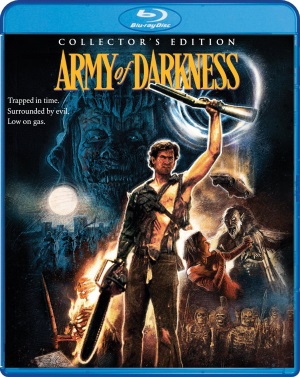 Army of Darkness: Collector’s Edition (Scream Factory, Blu-ray), Sam Raimi’s campy sequel to Evil Dead 2, is more of a tongue-in-cheek tribute to the fantasy films of Ray Harryhausen than a horror film. Bruce Campbell’s Ash lands in some medieval land with a chainsaw strapped on one hand, a shotgun in the other (“This is my boomstick!”), and a ’73 Oldmobile for a chariot, and he organizes the peasants to battle with the Deadites: an army of animated skeletons that could have walked out of a Harryhausen Sinbad movie (albeit one with an absurdist sensibility). Sure the mix of Three Stooges slapstick, anachronistic glibness (“Gimme some sugar, baby!” he croaks out to Dark Ages beauty Embeth Davidtz), and cult film homages in a medieval adventure wears a little thin, but it’s always clever and the shaggy special effects are a funky treat for all their inconsistencies. Note that Bridget Fonda has a cameo, recreating scenes from Evil Dead 2 as Ash’s girlfriend, in the opening sequence with Ash as an S-Mart clerk relating his adventures to his fellow employees. Shop smart. Shop S-Mart.
Army of Darkness: Collector’s Edition (Scream Factory, Blu-ray), Sam Raimi’s campy sequel to Evil Dead 2, is more of a tongue-in-cheek tribute to the fantasy films of Ray Harryhausen than a horror film. Bruce Campbell’s Ash lands in some medieval land with a chainsaw strapped on one hand, a shotgun in the other (“This is my boomstick!”), and a ’73 Oldmobile for a chariot, and he organizes the peasants to battle with the Deadites: an army of animated skeletons that could have walked out of a Harryhausen Sinbad movie (albeit one with an absurdist sensibility). Sure the mix of Three Stooges slapstick, anachronistic glibness (“Gimme some sugar, baby!” he croaks out to Dark Ages beauty Embeth Davidtz), and cult film homages in a medieval adventure wears a little thin, but it’s always clever and the shaggy special effects are a funky treat for all their inconsistencies. Note that Bridget Fonda has a cameo, recreating scenes from Evil Dead 2 as Ash’s girlfriend, in the opening sequence with Ash as an S-Mart clerk relating his adventures to his fellow employees. Shop smart. Shop S-Mart.
This is one of those cult films that gets a new edition every few years. This is not the first time on Blu-ray but it is the first Blu-ray special edition and Shout! Factory packs this three-disc set with goodies, including four different cuts of the film: the original theatrical version (81 minutes), which is an improvement over Universal’s earlier bare-bones Blu-ray; the longer director’s cut (96 min) which features Raimi’s original ending; the international cut (88 min), which is from a new 4K scan from the interpositive; and the 90-minute TV cut, which is presented in the lo-fi glory of standard definition fullscreen 1.33:1.
New to this edition is the feature-length documentary “Medieval Times: The Making of Army of Darkness” featuring Bruce Campbell and more than 20 members of the cast and crew but not Raimi, who apparently is now a little too big for this kind of thing. Raimi is, however, in the terrific commentary track to the Director’s Cut that he recorded years ago with Campbell and co-writer Ivan Raimi, a real party track that is a lot of fun. Everything else is vintage: 50 minutes of behind the scenes footage from KNB Effects, the featurettes “Creating the Deadites” and “The Men Behind the Army,” plus deleted scenes, additional behind-the-scenes footage and interviews, galleries of stills, TV spots and trailers. The only significant vintage supplement that’s missing, as far as I can tell, is the storyboard video track.
Calendar of upcoming releases on Blu-ray, DVD, Digital, and VOD

